Once a colorful Vijayanagara Kingdom, Hampi is now in ruins, beautiful ruins, a forgotten Empire. An empire that has stories to tell. Hampi, the UNESCO World Heritage Site that was once the richest city in India, will be all you need for an educational and beautiful getaway. Imagining the splendor in the once thriving kingdom as you walk through the ruins is an unforgettable, once-in-a-lifetime experience. Read on to learn more about one of the gems of Karnataka.
Once the capital of the ancient Vijayanagara Dynasty, Hampi is a hidden gem in India. It was once, after Beijing, the second largest medieval city in the world, with its ruins currently spreading over 4,100 hectares. It was even in the Ramayana! Hampi was probably the site described where the heroes Ram and Lakshman met Hanuman the monkey god, and Sugriva. With its rich history, it feels magical to know that you are stepping on the same ground that kings and queens did, and that there were once lively marketplaces where there are now ruins. It’s truly a mind-blowing experience. And, as a cherry on top, there are dozens of Gray langur monkeys in many of the locations :).
When someone thinks about tourism in India, they often think of North Indian attractions like the Taj Mahal, Qutab Minar, or the Golden Temple. Of course, while those are beautiful and worth seeing, many of the respective South Indian places are very underrated as a result. Hampi is one of them. Hampi got its name from a Kannada word derived from the Sanskrit Pampa, a name for the goddess Parvati. It’s been called Pampa-kshetra, Kishkindha-kshetra (Yes, the place in the Ramayana I mentioned, for those who find the name familiar), and Bhaskara-kshetra. In Hindu mythology, the association with Parvati is due to how it is said to be the place where Parvati wooed Shiva into marriage while he was lost in meditation. It was once a pilgrimage place, and over the centuries, became the seat of the Vijayanagara empire. The majority of the ruins are dated from the 14th-16th century, and largely consist of beautiful royal sites and temples spread out in a vibrant city. Some of the architecture is very typical of the Karnataka structures of the time, and some sites show influences from Muslim architecture at the time. Much was damaged or destroyed after battles with Muslim sultanates, but enough remains to get a sense of what it once was. From beautiful statues to huge baths, it has it all, and there is really nothing like it. Overall, it is a gorgeous visit that is well worthy of its reputation and
FREQUENTLY ASKED QUESTIONS :
Safety: The Hampi heritage sites are in a very safe area, and we did not have any safety concerns while being there. Of course, be cautious as you normally would be anywhere, but there is not a major pick pocketing issue. That being said, I am fluent in Kannada and Hindi, which made a difference in several places. If you are not fluent in Kannada and especially are not Desi, be cautious of price gouging. It is a huge issue with tourists throughout India.
Best time to visit Hampi:
There are a couple of good times to visit Hampi. Avoid March to May, as it is very unseasonably hot, going up to 40°C/104°F. The monsoon, from June to August, is quite nice. Not overly hot, and the rain can be nice. I went during that time frame and had a wonderful time. That being said, be cautious, as heavy rain may make it difficult to sightsee (like the flood threat that is current at the time of writing this post). The best time is winter, from November to February, due to the much more temperate weather. Additionally, if you go in November, you can catch the Hampi Utsav (or Festival of Hampi). There are folk song concerts, elephant marches, light and sound shows, and more.
Visa: If you aren’t an Indian national, you will need an Indian Visa, which you can apply for online.
How many days to stay: Two to three days is ideal; you will be able to see all the main attractions in that time frame for sure.
What are the stay options:
There are several accommodation options in Hampi, including many homestay options you can find online. I would recommend hotels, though, as they can be a bit more reliable.
A budget hotel option is the 3 Seasons Resort, which is around 25 km from most of the Hampi monuments.
We stayed at the Heritage Resort Hampi and Evolve Back, which is around 8 km from most of the Hampi monuments. which had great, spacious rooms, a wonderful aesthetic, and pretty good food. We were able to get a room with a private pool in both places, and it was a wonderful experience. The distance is also very ideal. Only con is that it can be quite pricey.
Budget: 3 Seasons Resort
Mid-Range: Hyatt
Splurge: Heritage Resort Hampi, Evolve
Getting there:
The nearest international airport to Hampi is the BLR (Bengaluru) airport, and Hampi is 350 kilometers away. The closest domestic airport is BEP (Bellary), which is a closer 60 kilometers away. So first, you would have to choose whether you are going straight from Bengaluru, or whether you want to fly to Bellary and then travel to Hampi. The latter would involve a 1.5-2 hour journey by car. Otherwise, it would be ideal to go from Bangalore to Hampi by car or by bus, which would be a 6-7 hour journey. There is no direct train from Bangalore to Hampi, so attempting the journey by train would be much longer than your other options.
Getting around: Although rideshare apps like Ola and Uber are active in Hampi, they can be a little unreliable. It would be best to hire a car or simply make the drive yourself in your own car, if you live in India or are able to rent a car.
Tour companies: We did not use a tour company for our trip. Viator could definitely be useful. If you are not an Indian or are not fluent in Kannada, it is a good idea to get a tour guide. If you are interested in using the services of local guides, make sure they are accredited first to ensure a better experience.
Currency: The currency used in Hampi is INR, the Indian rupee. Make sure you have cash on hand.
Phone: If you don’t have an Indian phone plan, your phone will not have coverage in Hampi. Virtually all modern smartphones (iPhone 7 and newer) are compatible with India’s mobile infrastructure and every major US carrier has international data plans — so your smartphone should automatically work once you arrive in India because the major US carriers have partnerships with local Indian carriers. We had an Indian sim, make sure to check with your carrier.
Electric plugs: The power plugs used in India are type C, D, and M. You can use a global adapter like this one.
Food: Be warned, there are not many food options in and around Hampi. You’d be best relying on the food of the hotel you’re staying in and/or packing some food yourself.
Language: While it can be very useful to know Kannada, you can get by with English in Hampi. A couple of Kannada phrases can be helpful.
What clothes to take:
Hampi is hot, humid and rainy. Make sure to dress accordingly. I’d say wear colorful clothes to offset the brown ruins.
PLACES TO SEE/MUST SEE IN HAMPI:
1. Virupaksha Temple.
The Virupaksha Temple is one of the stars of Hampi. With its start as a couple of shrines, that may be as dated as the 7th century, the temple was expanded into a vast complex during the first half of the 16th century AD. It is in a long rectangular enclosure divided into two large courts with two awe-inspiringly large gopuras, or gateways. It is one of the oldest still active temples in the world, with shrines to Narasimha, Suryanarayana, Parvati, and many other gods. A water channel was drawn from the river to source water for the temple kitchen, and you will be able to clearly see it as you walk through the temple. There are beautiful paintings on the ceiling, and daily poojas, or rituals. There are also many gray langurs, so be careful if you’re holding food in your hand (especially bananas), as they will try to snatch them.
One of the main attractions is the adorable elephant Lakshmi, who will bless you if you place 10 rupees or food in her hand. As those of you who follow me know, I’m an animal lover, so I feel that I’m obliged to bring the ethical concerns of keeping a herd animal like an elephant without a community and in a small, enclosed space for much of the day. While I heard she’s treated well, it’s definitely up to you to make the decision about whether you want to get her blessing or not.
2. Coracle Ride (Kotilinga)
A fun activity to do in Hampi is the coracle ride, which is a ride through the beautiful river Tungabhadra on a bamboo boat. The view of the river and the walking journey up to the river is gorgeous, along which you see the Kotilinga, which refers to the many small Sivalingas alongside the sheetrock on the river bank. There are several legends about these lingams, including that they were once worshipped by monkeys, which inspired the name, as Koti means monkey in Kannada. The boat ride itself was amazing. You have the option of a 30-minute ride (which is what we chose, as my older son and husband get motion sick easily) and a 1-hour ride, the latter of which will allow you to stop and explore several temples along the river. For both, you stop under a big boulder for some time, which will allow you to rest under the natural air conditioning. Seriously, the cooling effect is unbelievable. Feel free to take a snack or small meal along so you can eat it there!
3. Vitthala Temple
Another one of the great jewels of Hampi, the Vijaya Vittahala temple has a massive enclosure with three lofty gopuras on the north, south, and east. You have to stop relatively far away and get on a buggy to get there, along which you see the ruins of what was once a bustling marketplace. The temple itself is beautiful, with a Garuda shrine, a Devi shrine, a kalyana mandapam (wedding hall), and most famously, the stone chariot, which features on the 50 rupee note. As a Vishnu temple, the walls are filled with sculptures depicting scenes from the Ramayana and Mahabharata, as well as ancient Kannada script. We had a wonderful tour guide there who explained everything very well to us and took many great pictures of us. Check this out for the beautiful architecture and rich history.
4. Narasimha Shrine
Hampi features a monolithic 6.7-meter Narasimha sculpture, built out of a massive boulder in 1528 AD. It is also called the Lakshmi Narasimha, as part of the statue included Lakshmi seated over the left lap of Narasimha. However, over the years, the image of Lakshmi became mutilated, with only her left arm remaining. Nevertheless, the Narasimha is imposing and beautifully done. Additionally, very close is a monolithic Shiva lingam nearly 3 meters high, which is partially submerged in water.
5. Underground Shiva Temple
The Prasanna Virupaksha temple, or Underground Shiva temple, is a small 14th-century AD temple that is largely underground. It is called that as it is much below ground level. We weren’t able to see too much of it due to the rising water level, but it was still absolutely worth seeing, partially because it is in the same area as the royal structures I’ll be talking about next.
6. Lotus Mahal
The Lotus Mahal is an Indo-Islamic structure with a really remarkable design. It is almost fully intact and resembles a lotus bud in the way its dome and passages are structured. There are two stories, and it is surrounded by a wall and two towers. Due to the trees around it, it is also a place to cool off during the day. It was part of the Zanana enclosure, where the royal families of the Vijayanagara Empire were. You will be able to see more of the enclosure after visiting the Mahal.
7. Hazara Rama Temple
The Hazara Ramachandra temple is another Rama temple, with a full depiction of the Ramayana on its walls, a spacious porch, as well as many other beautiful structures. Something of note is the name: Hazara means a thousand in Persian. This, again, shows the wonderful mix between Hindu and Muslim architecture and culture that exists in Hampi.
8. Royal Enclosure
The Royal Enclosure is another place you can walk through very close to this area. It features many interesting structures to see, including one of our favorites, the Stepped Tank. It’s a huge water storage tank that looks almost like an underground pyramid from the top. We had an on-site tour guide who took us through and explained much of the enclosure, which was absolutely worth it.
9. Queens Bath
The Queens Bath was also built in the Indo-Islamic style. Outside, it is very simple, but inside is where it shines. It’s a large sunken bath with a bath area of 15 square meters and a depth of 1.8 meters. The balconies are ornate, with cut-plaster decoration projecting into the well. It was definitely one of the most picturesque buildings in Hampi.
________________________________________________________________________________
Itinerary:
Day 1: We started the drive from Bangalore to Hampi early in the morning. Once there, we checked in at our hotel, had a quick meal, and then drove to the Hazara Rama temple. After checking it out, we went to the Underground Shiva Temple and proceeded to check out the royal structures: The Lotus Mahal, Stepped Tank, Queens Bath, Elephant Stable, and more. Finally, we returned to the hotel, had dinner, and slept.
Day 2: After breakfast, we started with the Virupaksha Temple. After checking it out, we went to the Vijaya Vitthala temple. Finally, we had a 30-minute coracle ride.
Day 3: Enjoy the resort with some massages and swimming.
________________________________________________________________________________
**PIN FOR LATER**
**I hope you check out this wonderful place in Karnataka! Thank you for reading.
Stay in touch for more travel details, and food on Instagram and Pinterest for daily doses of food.**
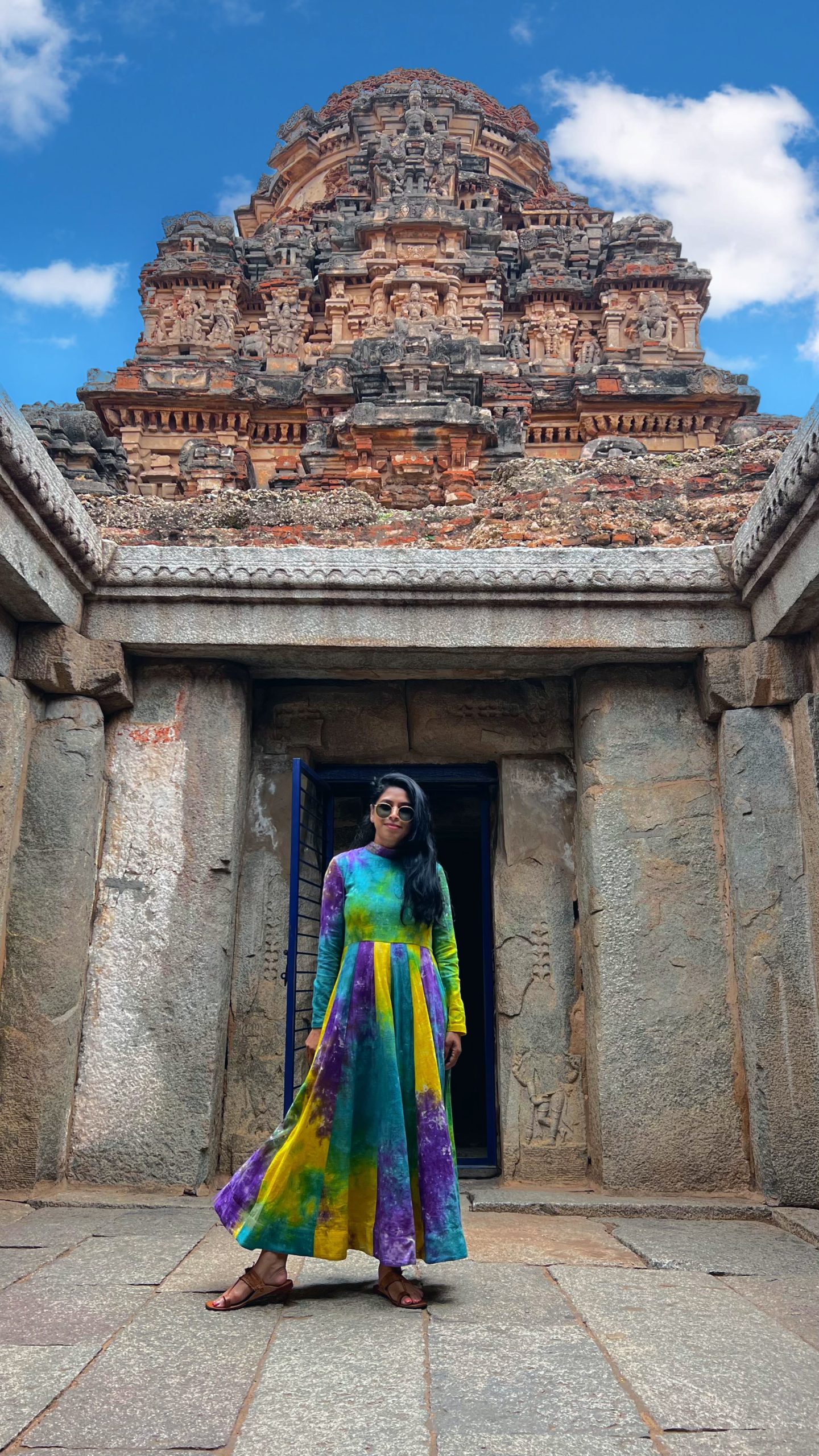
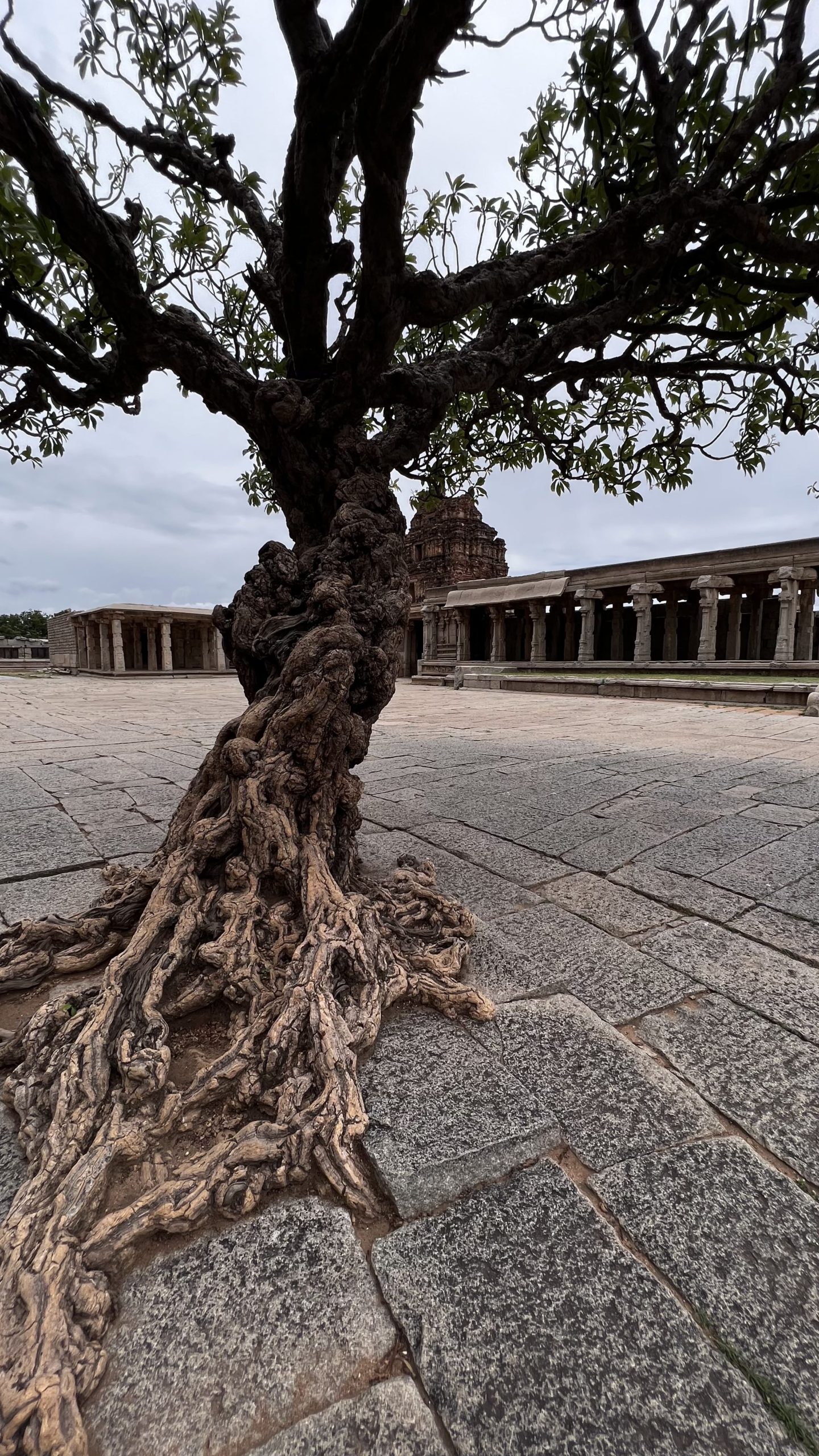
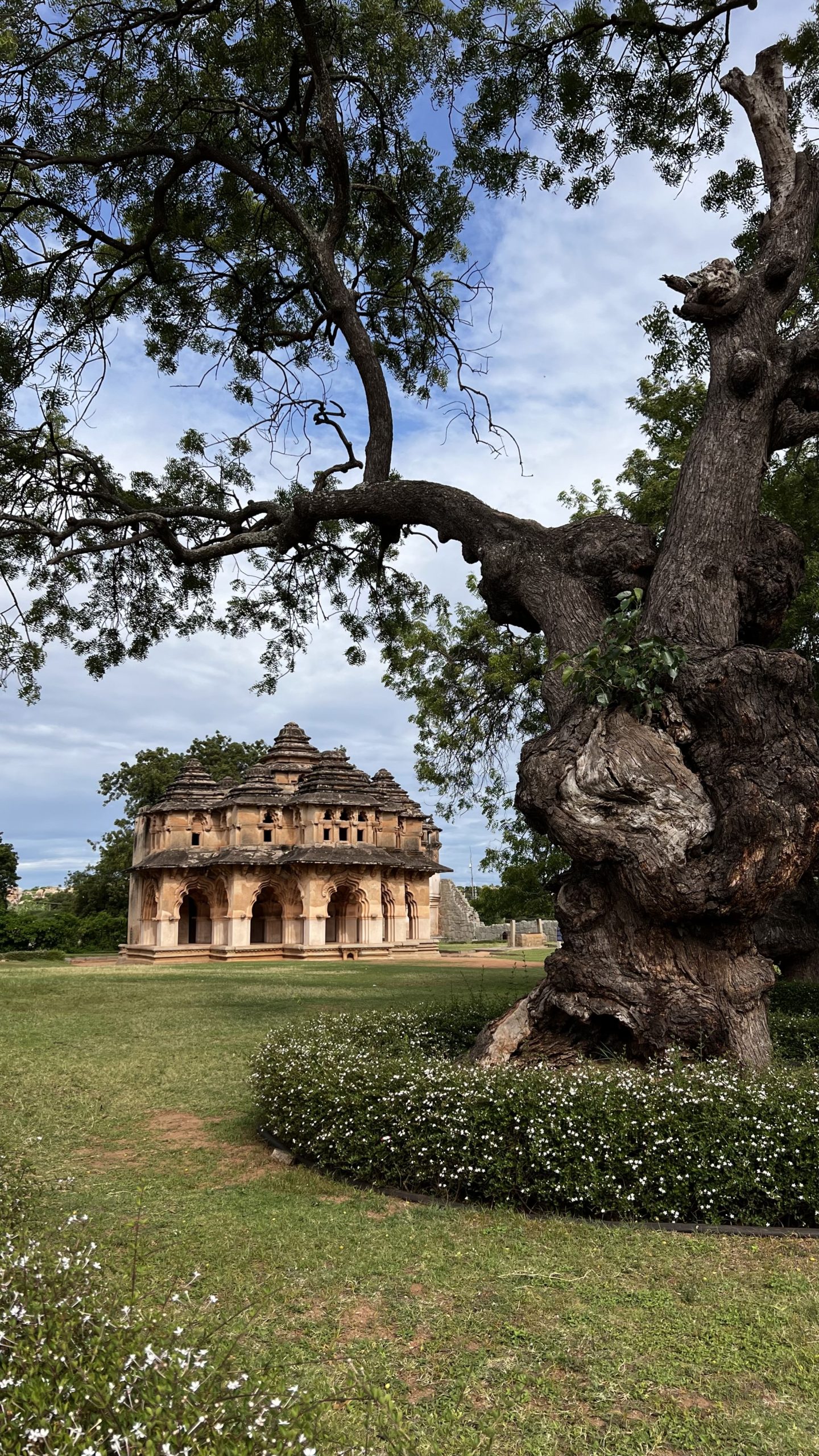
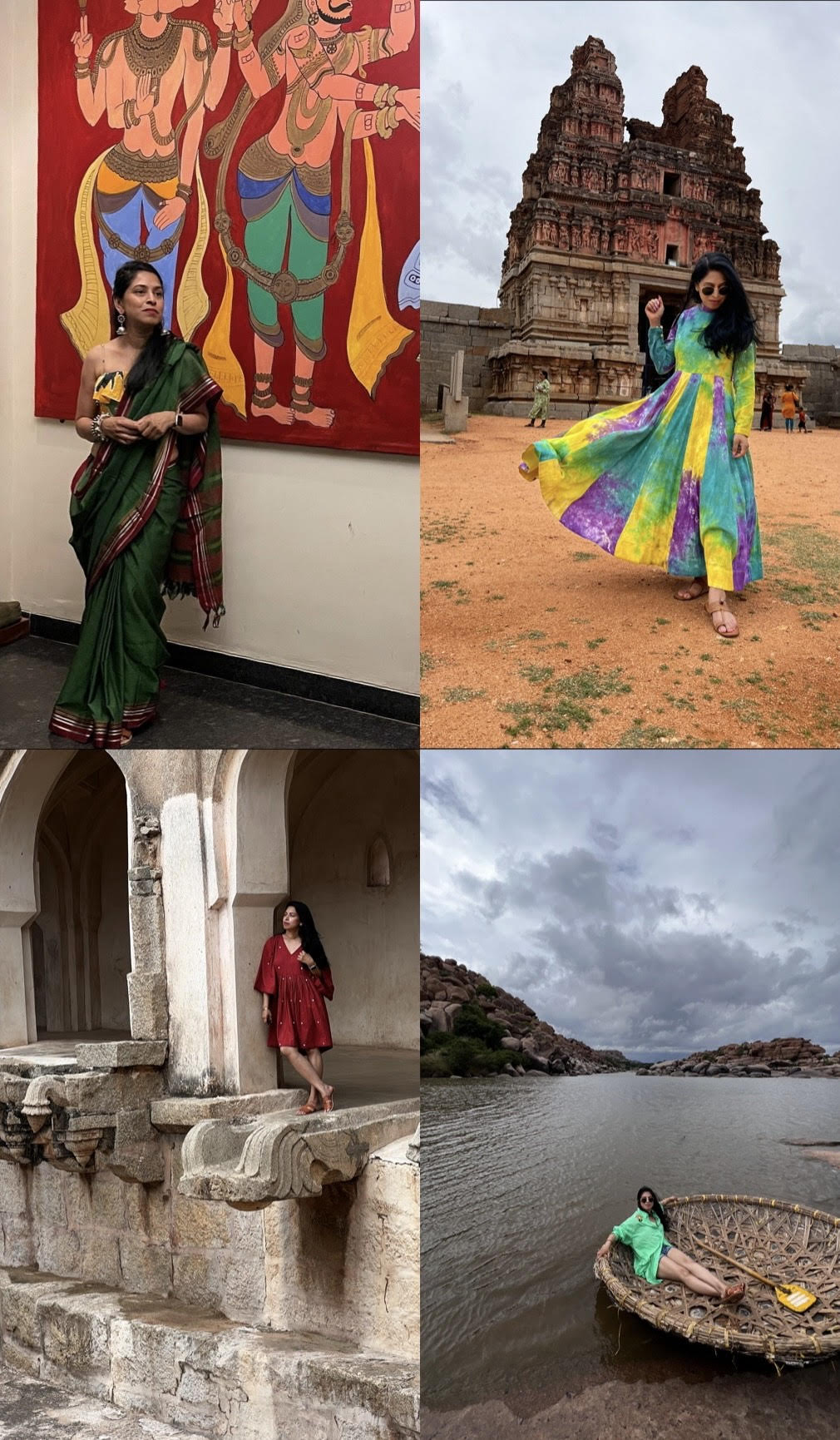
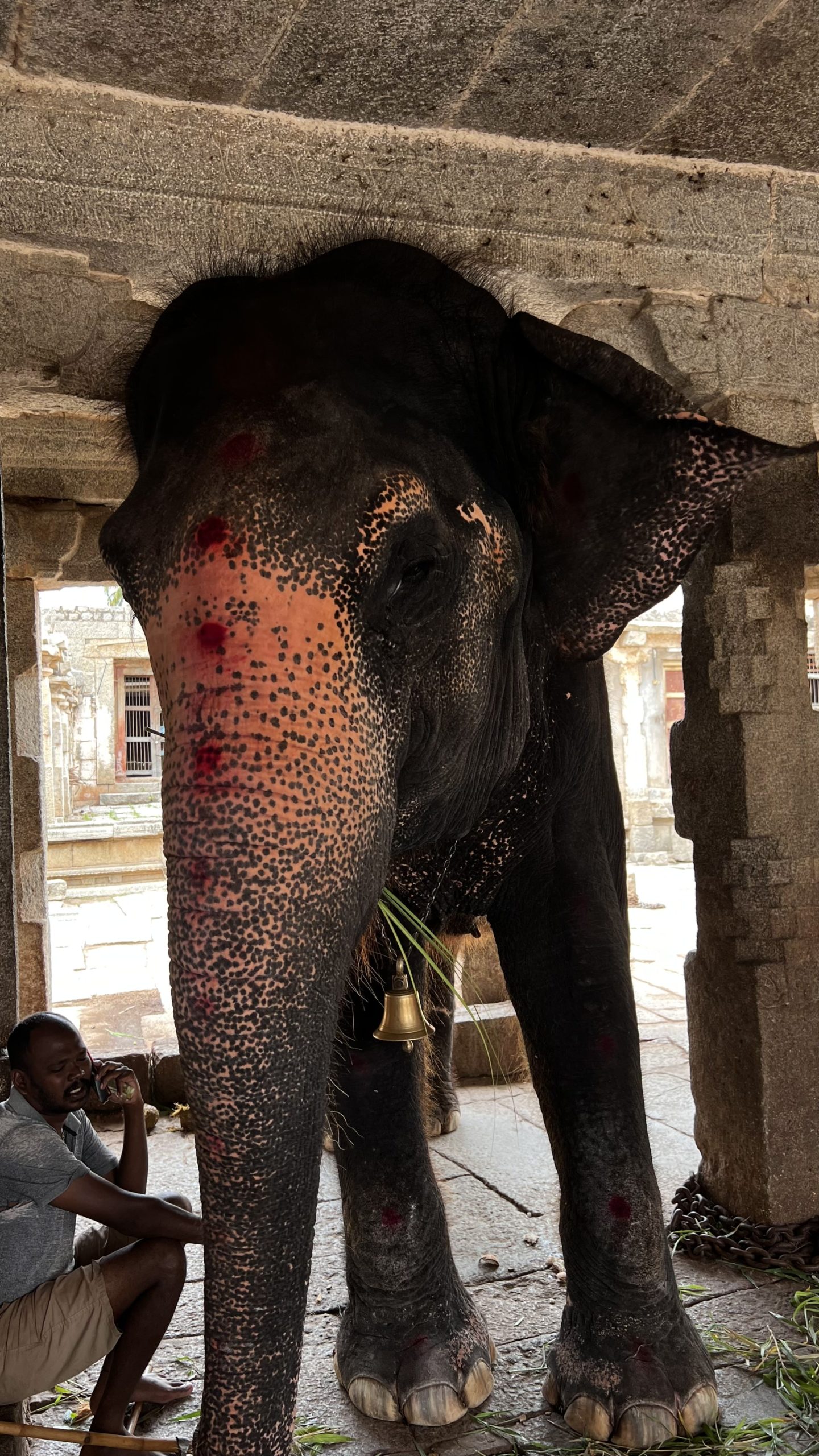
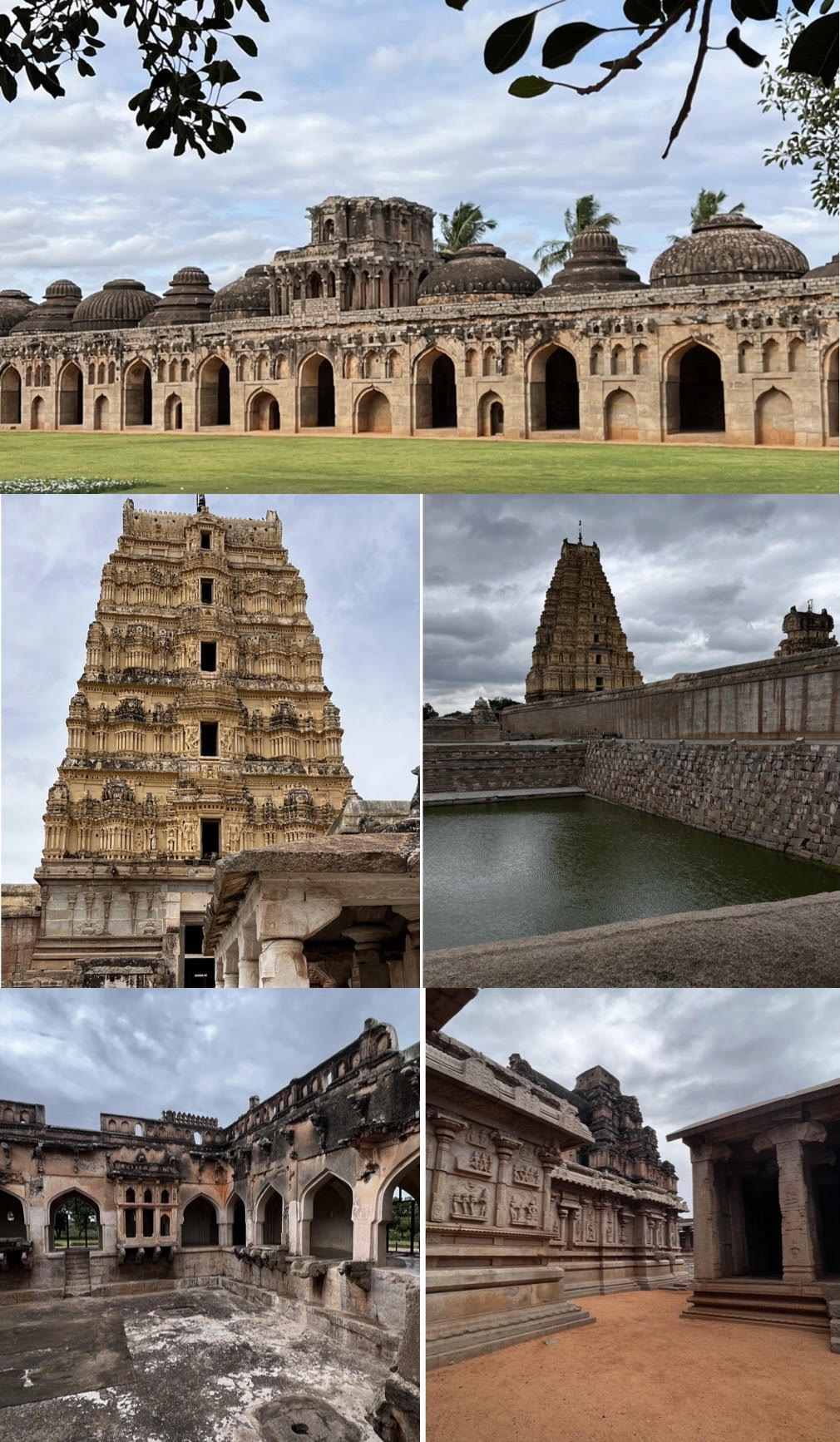
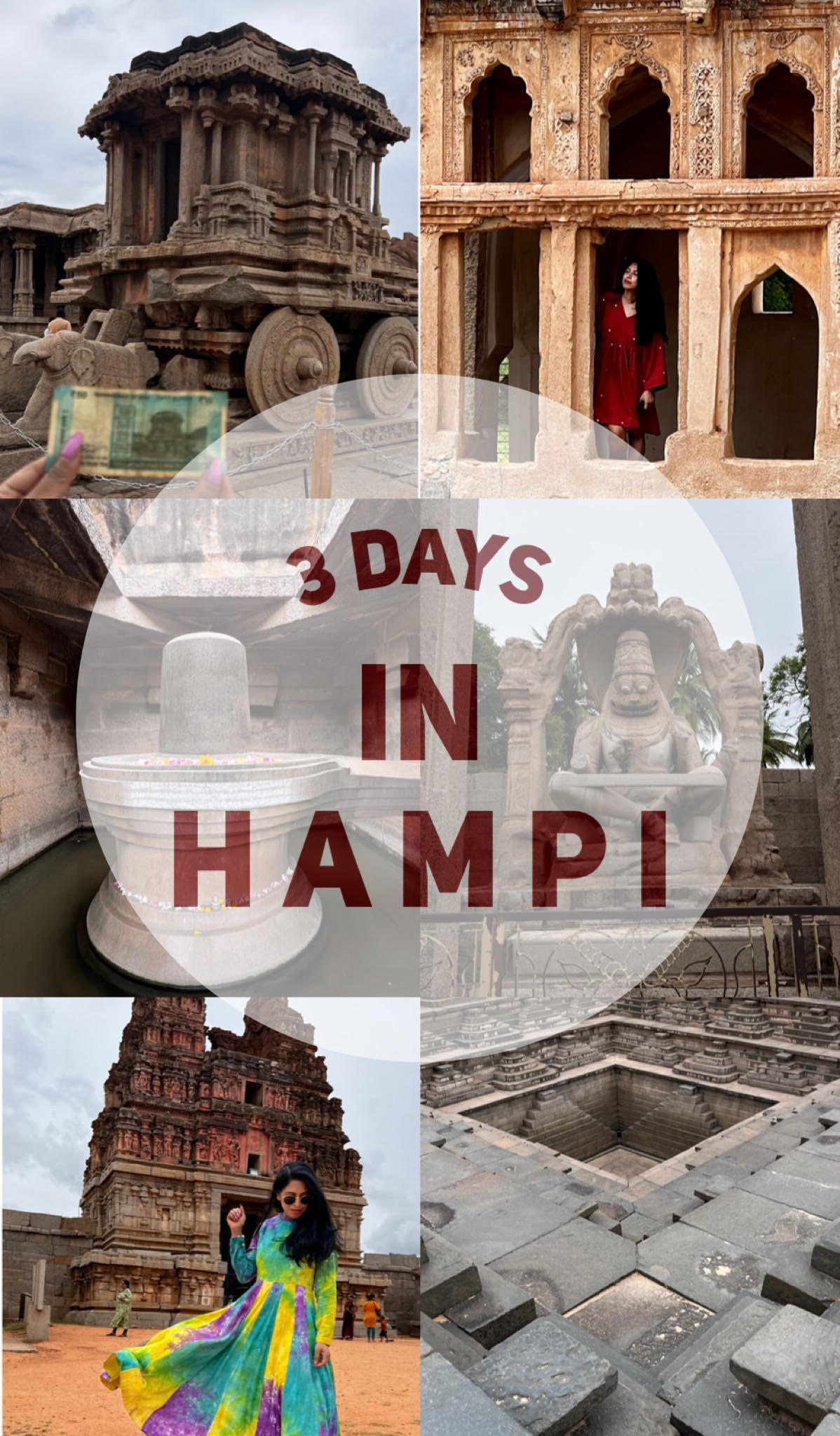
Such a beautiful informative post, i am a big fan of old heritage sites. Hampi has been on my list for few years. Now i think i will just follow this itinerary and set a date. ❤️